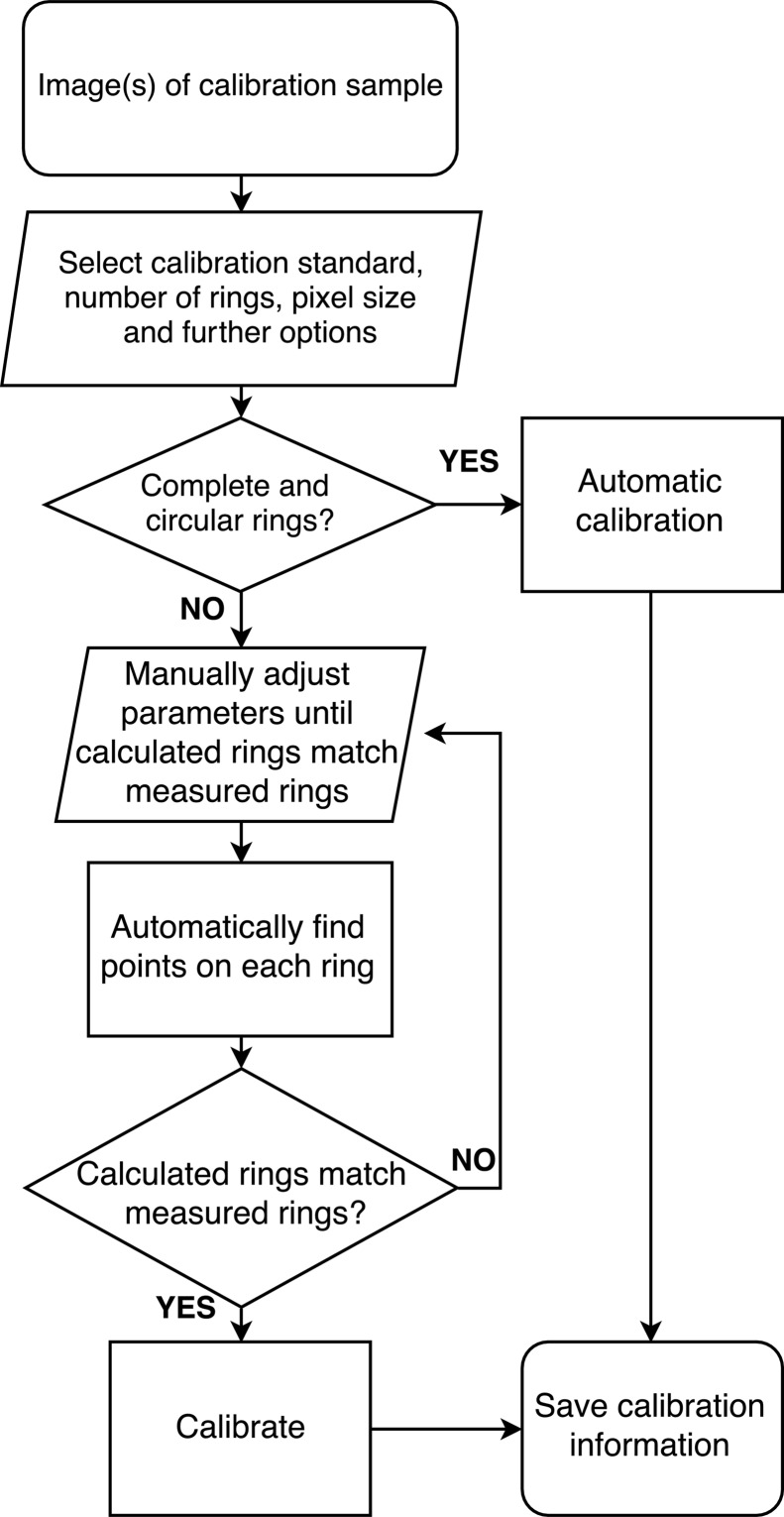Figure 1.
Work flow for obtaining the parameters of the diffraction geometry. After a (set of) two-dimensional calibration image(s) has been loaded and the process has been initialized, the details of the data define how to proceed. Data with almost complete Debye–Scherrer rings of low ellipticity are suited for the automated process. Highly elliptical or partial rings require a manual treatment. Ultimately the calibration information is saved and made available for the data processing.

